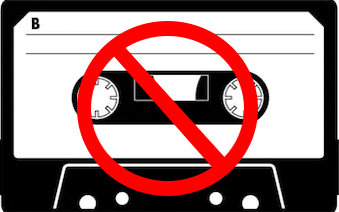At a glance
- Taught live online
- Thursdays 18:30 - 20:30
- 20 weeks | October - March
- Starts 17 October 2024
- Fees from £288
- Tutor: Dr Bruno Bower
Enrol-by Date
- Enrolment for the October-start courses has now closed
Introducing Dr Bruno Bower, Tutor
Are you baffled by Brahms? Perplexed by Prokofiev? Stumped by Strauss?
On this course Bruno Bower invites you to join him on a journey to discover new ways to understand classical music, without any of the obscure jargon. Knowing who, how, and why people created, played, and listened to music makes it much easier to relate to the deeper levels of texture and structure that lie behind the sounds we hear.
The focus on the course is on the stories music tells:
- What kinds of stories do composers tell through music?
- What methods do they use to tell them?
- What kind of historical stories can we discover through music?
- And how has historical music been shaped by the social and cultural context of the time?
The course is suitable for people with or without previous knowledge of classical music. On the course you will gain fresh perspectives on some famous works of classical music, and you will have opportunities to discover some less well-known pieces along the way.
One of the aims of the course is to give you greater confidence to enjoy classical music and to encourage you to hear classical music played live.
Class Recordings

These classes are not recorded
Attendance Certificate

Successful completion of this course leads to the award of an Imperial College attendance certificate
Terms and conditions apply to all enrolments to this course. Please read them before enrolment
Course Information
- Course Programme
- Your Tutor
- Course Fees and Rate Categories
- Term Dates 2024-2025
- Enrolment Process
- Any Questions?
Weekly Programme (may be subject to minor modification)
AUTUMN TERM
1. Introduction
The course begins with Holst’s The Planets, one of the most famous pieces of classical music, as a way of easing into thinking about classical music in general. We will use this piece as a way of introducing a lot of the other topics that the course will cover.
2. Concepts 1: Colours
This class introduces a particularly important metaphor for thinking about orchestral sound, talking about how different instruments and combinations of instruments can be compared to different types of colour. Debussy’s La Mer will serve as a case study for how these different colours can be subtly blended and shaded.
3. Concepts 2: Pictures
We then move on to thinking about how composers use ideas of colour to put together visual images for their music, showing how the sound can invoke more concrete ideas. Ravel’s orchestration of Mussorgsky’s Pictures at an Exhibition serves as the main example from a practical perspective, but also Ravel’s own music shows how colour can be turned to more national purposes, in particular his Spanish-influenced pieces.
4. Concepts 3: Stories
Here we expand the idea of pictures further to explore the ways in which pieces of music might outline a plot over the course of them, with particular reference to the genre of ‘tone poems’. We will work through Strauss’s Till Eulenspiegels lustige streiche (Till Eulenspiegel’s Merry Pranks), showing how the music depicts the activities of the main character.
5. Concepts 4: Dialogue and conflict
This class then turns to another metaphor for thinking about how instruments in an ensemble interact with each other, covering both ideas of conversation between different lines or sections and the idea that composers might also be in dialogue with other composers or pieces from the past. Both of these will come up as part of a detailed examination of Britten’s Violin Concerto.
6. Structures 1: Dances
The next four classes will start to introduce the more abstract ways in which composers divide their music up into sections, and how those sections relate to each other. We start with music for dance, looking at the way that the sections help both social and professional dancers navigate their way through the steps. We’ll also talk about pieces that use dance forms but were never meant to actually be danced to, and how the music shows this.
7. Structures 2: Variations
Composers across all times and places have always used techniques to change and transform their material in ways that we refer to as ‘variation’, but there are also particular pieces which foreground this approach by taking a tune and making changes to it as the entire content of the work. We’ll discuss both the general techniques and the specific pieces, with reference to Paganini’s Caprice No.24 and all the pieces which have varied its main melody across history.
8. Structures 3: Rondo
Here we start getting into the more abstract kinds of structure, and look at pieces that are defined by the idea of some material regularly returning. Covering both the Baroque ‘ritornello’ form and the later ‘rondo’ form itself, we’ll then look at how composers took up this structure and used it for narrative and (in the case of Smetana’s ‘Vltava’) national purposes.
9. Structures 4: Sonata form
The last class in the term covers a tricky but extremely important structure that underpins a huge amount of the music you will be most likely to encounter in classical concerts. Building on the structures we’ve already outlined, we will show how this form is created, but also how its two contrasting themes embody the binary ideas of society that were emerging in the nineteenth century.
*** Christmas break ***
SPRING TERM
10. Genres 1: Symphony
With a general sense of the structures of music in place, this term starts to outline how they form the basis of various genres of classical music. This class starts with the symphony, showing how it emerged from a simple opener for an evening of dancing into the main event in its own right, especially once composers had latched onto its potential for personal expression.
11. Genres 2: Concerto
Building on the class on Dialogue and Conflict in particular, this class looks at the emergence of a form that puts a single instrumentalist against an ensemble, and how the social contexts in which this happens changed over time. In particular we’ll discuss the emergence of concertos for unusual instruments such as tuba, accordion, or percussion.
12. Genres 3: Choral Music
As an important component of many large-scale concerts, especially in this country, this class offers a very general survey of music for choir, starting with the basics of who is singing and where and moving through to the more historical issues of religious versus secular performances. We’ll see how the latter became particularly important for a narrative of music history, but how the former never stopped either.
13. Genres 4: Chamber Music
This class offers a general overview of another large division of music, showing the different ways in which chamber groups are categorised, and the different ways in which they have been played across time. In particular we’ll talk about the move from private music-making by amateurs at home to professionals in public concert halls, and how the music changed accordingly.
14. Genres 5: Art Song
Forming a subset of chamber music, Art Song has been separated out because of the special range of issues that come up for how composers write them and how people listen. These include topics such as poetry and how its interpreted, as well as ideas of narrative groups (or ‘cycles’) or songs and the social and national implications behind songs in different languages.
15. Genres 6: Fugue
Here we will discuss a particularly specialised way of constructing music, demonstrating how the structure of a fugue is intended to show off a composer’s virtuosic skill in handling material. Again, we will also discuss how these ideas changed over time as the rules around composition shifted and relaxed, thinking about how this way of putting music together got used as part of other pieces and how the meaning of it changed in the process.
16. Genres 7: Opera
As one of the biggest and most important forms of music across history, this class will offer a general overview of the ideas that govern how it works and the changing ways in which it has been presented and understood over time. The role of lighting in particular will be flagged as a key transformative element in how the audience interact with a work, changing all of the visual and sonic aspects of a production as audiences start to actually pay attention to it.
17. Periods 1: Renaissance and Baroque (16th and 17th century)
This last group of classes will turn to the more chronological understanding of music history that you will be most likely to encounter elsewhere, bringing together the various threads that previous classes have outlined. Here we will talk about the start of music printing and publishing, and how this interacted with people making music in the home in both religious and secular ways.
18. Periods 2: Classical (18th century)
Here we will explore some of the ideas that were starting to gain traction at this point in history, especially to do with ‘progress’ and the importance of the ancient past as a model. We will see the ways in which composers responded to the idea of a new ‘simplicity’ in musical form and style, contrasting with the ‘baroque’ of previous generations, and how they drew on the latest archaeological findings to justify their approach.
19. Periods 3: Romantic (19th century)
Many of the ideas from the previous class start to take on a special importance here, especially the notion of progress. We’ll see how many of the ideas traditionally associated with Romanticism showed themselves in the music, but also see how they interacted with wider changes in technology and society, affecting who was able to engage with music and what they were expecting to hear.
20. Periods 4: Modern/Postmodern (20th/21st centuries)
The final class in the course looks at the last century of musical activity, picking out some of the threads that run through it. The discussion will particularly focus on the idea of ‘atonality’, but also on the new kinds of technology that emerged across the period and how they changed what composers did with music. We’ll finish with some of the material that is only now starting to suggest a move away from ideas of progress that started several centuries ago.
Additional Reading
There is no compulsory reading required for this course, and there is no set course text.
 Dr Bruno Bower is a lively and enthusiastic tutor whose love of music is infectious. He is a musicologist, performer, composer, and music editor, as well as a highly experienced teacher. He has taught at Cambridge University, University of Surrey, Brunel University, and the Royal College of Music, and his innovative teaching methods have been recognised by Fellowship of the Higher Education Academy. Alongside his courses at Imperial, he currently teaches at the Guildhall School of Music and Drama.
Dr Bruno Bower is a lively and enthusiastic tutor whose love of music is infectious. He is a musicologist, performer, composer, and music editor, as well as a highly experienced teacher. He has taught at Cambridge University, University of Surrey, Brunel University, and the Royal College of Music, and his innovative teaching methods have been recognised by Fellowship of the Higher Education Academy. Alongside his courses at Imperial, he currently teaches at the Guildhall School of Music and Drama.
He has written and presented on subjects as diverse as Gilbert and Sullivan, John Cage, and Victorian polymaths, and he is the General Editor for critical editions of music by Peter Gellhorn and Norman O’Neill, as well as editorial consultant on the AHRC-funded ‘Music, Migration and Mobility’ project at the RCM. He is also the principal oboist of West London Sinfonia and the cor anglais player for Chelsea Opera Group.
| Weeks | Standard Rate | Internal Rate (Imperial students & staff) | Associate Rate | ||
|---|---|---|---|---|---|
| 20 | £536 |
£320 | £422 | ||
| All fee rates quoted are for the whole 2-term course. Part-payments are not possible. | |||||
Rate Categories and Discounts
Standard Rate
- Available to all except those who fall under the Internal Rate or Associate Rate category.
Internal Rate
- Current Imperial College students and staff (incl. Imperial NHS Trust, Imperial Innovations, ancillary & service staff employed on long-term contracts at Imperial College by third-party contractors)
- People enrolling under our Friends & Family scheme
- Alumni of Imperial College and predecessor colleges and institutes, including City & Guilds College Association members
- Students, staff and alumni of the Royal College of Art, Royal College of Music and City, UAL and the City and Guilds of London Art School
- Students, staff and Governors of Woodhouse College and the IC Mathematics School
Associate Rate
- Austrian Cultural Forum staff
- Co-operative College members
- Francis Crick Institute staff, researchers and students
- Friends and Patrons of the English Chamber Orchestra
- Friends of Hyde Park and Kensington Gardens
- Friends of Leighton House/ Sambourne House
- Friends of the Royal College of Music
- Harrods staff
- Historic Royal Palaces staff
- Lycee Charles de Gaulle staff
- Members of the Friends of Imperial College
- Members of the Kennel Club
- Members of the London Zoological Society
- Members of the South London Botanical Institute (SLBI)
- Members of the UK Council for Psychotherapy (UKCP)
- National Health Service (NHS) employees
- Natural History Museum staff
- Residents of postcodes SW3, SW5, SW7, SW10 and W8
- Royal Borough of Kensington and Chelsea Council staff
- Royal Geographical Society staff
- Science Museum staff
- Staff of Exhibition Road Cultural Group (Discover South Kensington) organisations
- Students (non-Imperial College)
- Teachers and other staff of UK schools
- The American Institute for Foreign Study
- Tutors and other staff of institution members of the Association of Colleges
- Tutors and other staff of other universities and higher education institutions
- Victoria and Albert Museum staff
Late enrolment
It is possible to enrol on many of our adult education courses after the course has already started. For non-language courses this is subject entirely to agreement by the tutor. For language courses it is subject to agreement by the language coordinator conducting level assessment. If you want to join a course late do bear in mind there might be work you will need to catch up on, particularly in language courses.
Friends and Family Scheme
This course is eligible for allowing Imperial College students and staff to share their discount with their friends and family.
| Weeks | Autumn term | Spring term | Summer term | ||
|---|---|---|---|---|---|
| 20 | Week starting 14 October - week ending 14 December 2024 (9 weeks)* | Week starting 6 January - week ending 22 March 2025 (11 weeks)* | n/a | ||
| *This is a 2-term course - Autumn term PLUS Spring term - with the Christmas break in between | |||||
Enrolment via the blue booking link is open. Early-bird discounts are available until the end of 30 September 2024
Enrolment and payment run through the Imperial College eStore. When enrolling:
- Do check on the drop down menu above called "Course Fees and Rate Categories" to see if you are eligible for a discounted rate and also do make sure you select that rate when enrolling on the eStore
- If you are a first-time eStore user you will need to create an account before enrolling. You can do this by entering an email address and password. This account can then be used for any future enrolments via the eStore.
When you have enrolled you will be sent the following email notifications:
| What is sent | When is it sent | What does it contain | |
|---|---|---|---|
| 1. Payment confirmation | Is sent straight away following submission of your online application |
|
|
| 2. Enrolment confirmation | Is usually sent within 10 working days. Please treat your payment confirmation as confirmation that your applicant details and payment have been received |
|
|
| 3. Programme information | Is usually sent on Friday late afternoon the week before term starts |
|
|
|
|||
If you have any questions about the academic content or teaching of this course please contact the Course Tutor, Dr Bruno Bower, b.bower@imperial.ac.uk
If you have any questions about your enrolment or payment processes please contact the Programme Administrator, Christian Jacobi, eveningclass@imperial.ac.uk
Useful Links
Courses Now AvailableStudent HandbookFrequently Asked QuestionsJoin Our Mailing ListSci Comm Students' DiscountsStaff Information (Staff Use)Contact us
Imperial after:hours Adult Education
Centre for Languages, Culture and Communication
Level 3 - Sherfield Building
Imperial College London
London SW7 2AZ
eveningclass@imperial.ac.uk
Tel. +44 20 7594 8756

